- AWS Solutions Library›
- Guidance for Amazon Seller and Vendor Central Data Producer
Guidance for Amazon Seller and Vendor Central Data Producer
Overview
How it works
Overview
This architecture uses serverless and managed services to help customers develop efficient and secure applications to integrate with Amazon Seller Central and Amazon Vendor Central. Customers can use this to ingest, process, and gain insights from their Amazon.com data.
Please note: This is the overview architecture. For diagrams highlighting different aspects of this architecture, open the other tabs.
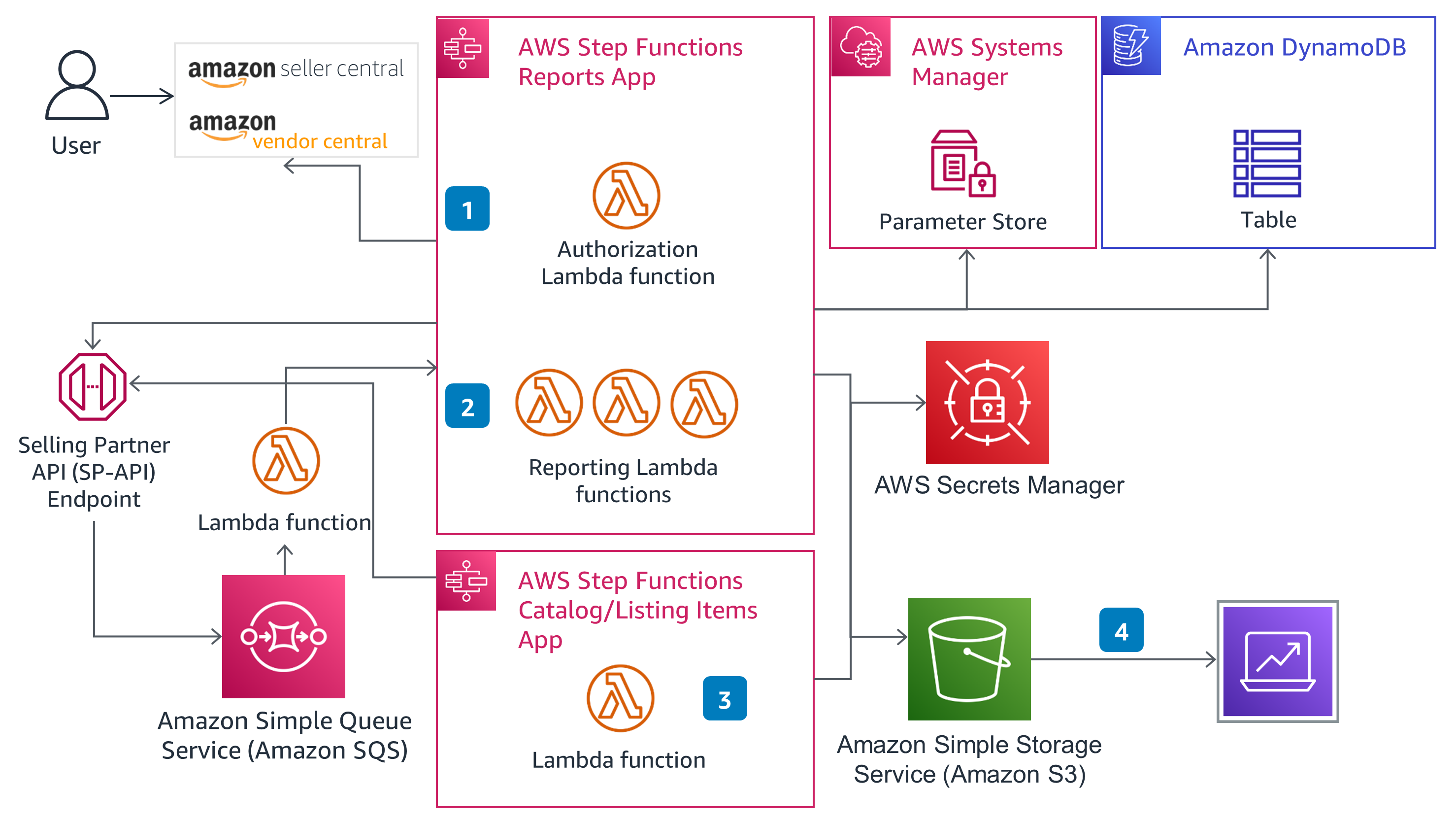
Authentication and Authorization
This architecture shows the registration process with Amazon Seller Central and Amazon Vendor Central. It includes: receiving a refresh token, secure token storage, exchanging for an access token, and using an authorized token to make API calls to the Selling Partner API (SP-API).
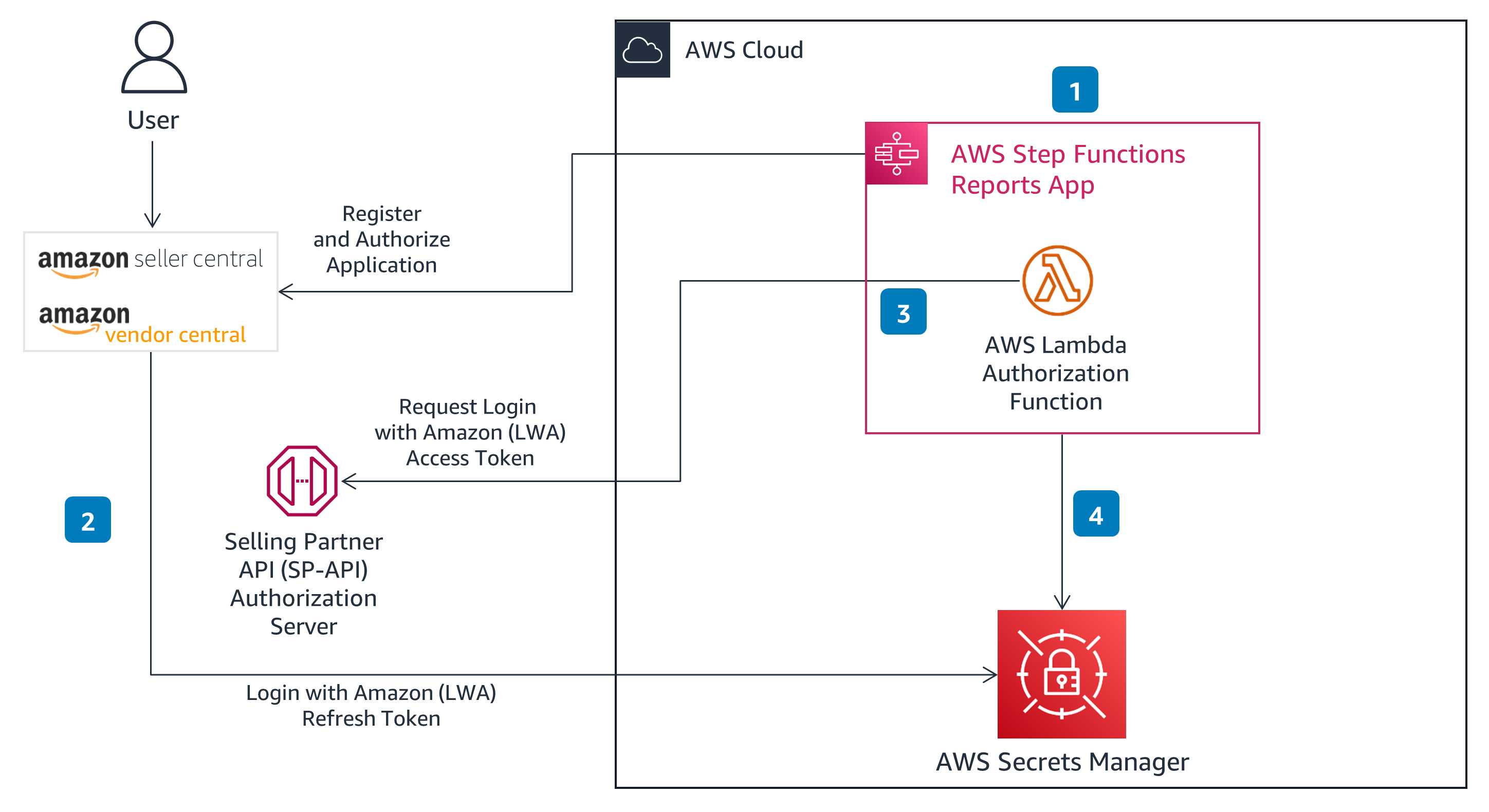
Serverless Reports Application
This architecture shows how to create a serverless reports application to automatically ingest, process, and store data obtained from the Amazon Seller Central and Amazon Vendor Central Selling Partner API (SP-API).
Please note: currently, the REPORT_PROCESSING_FINISHED notification type only works for seller applications. Vendor applications will have to use a polling method.
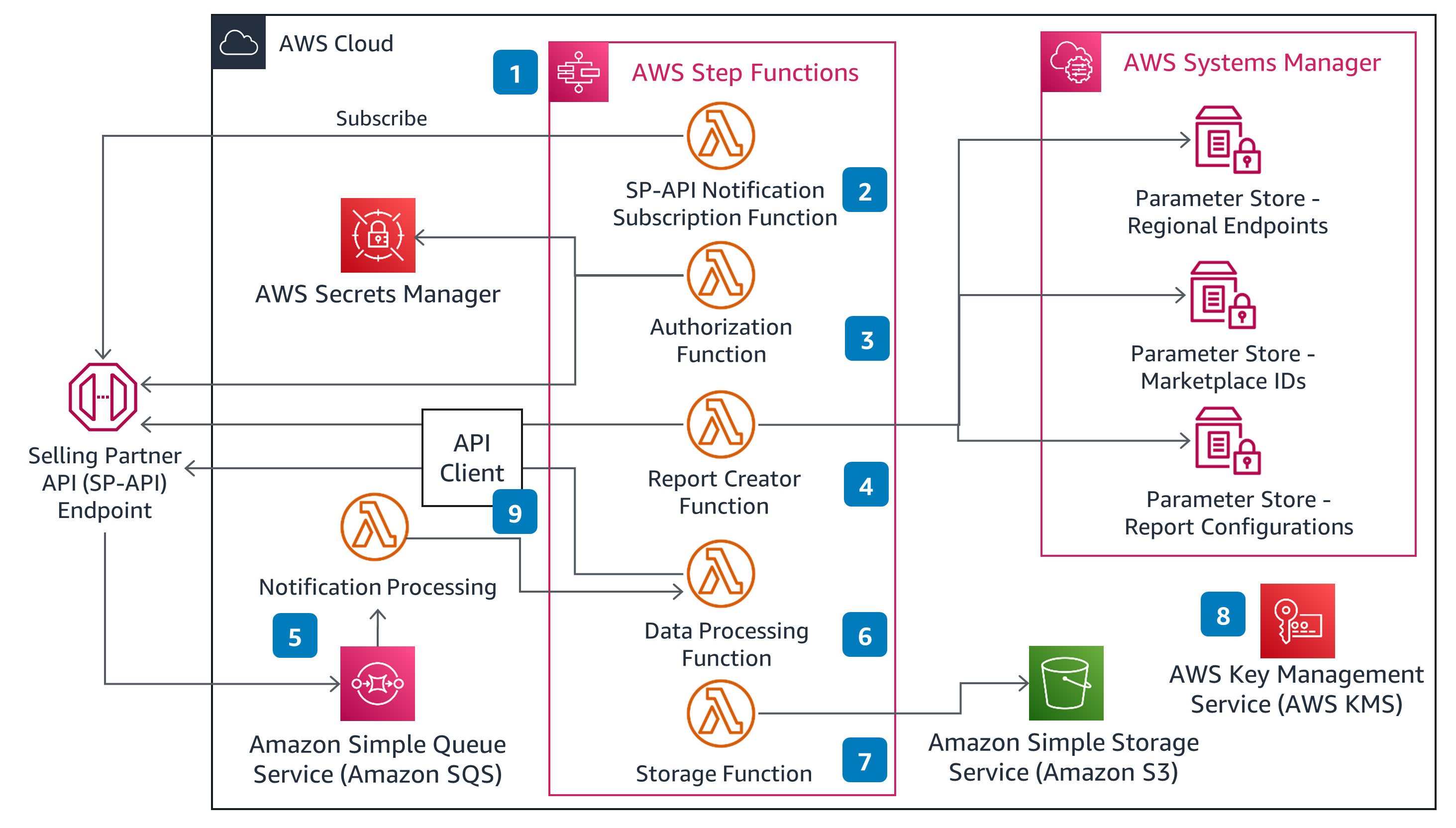
Serverless Catalog Items and Listing Items Applications
This architecture shows how to create a serverless application to integrate with the Catalog Items and Listing Items APIs from the Amazon Seller Central and Amazon Vendor Central Selling Partner API.
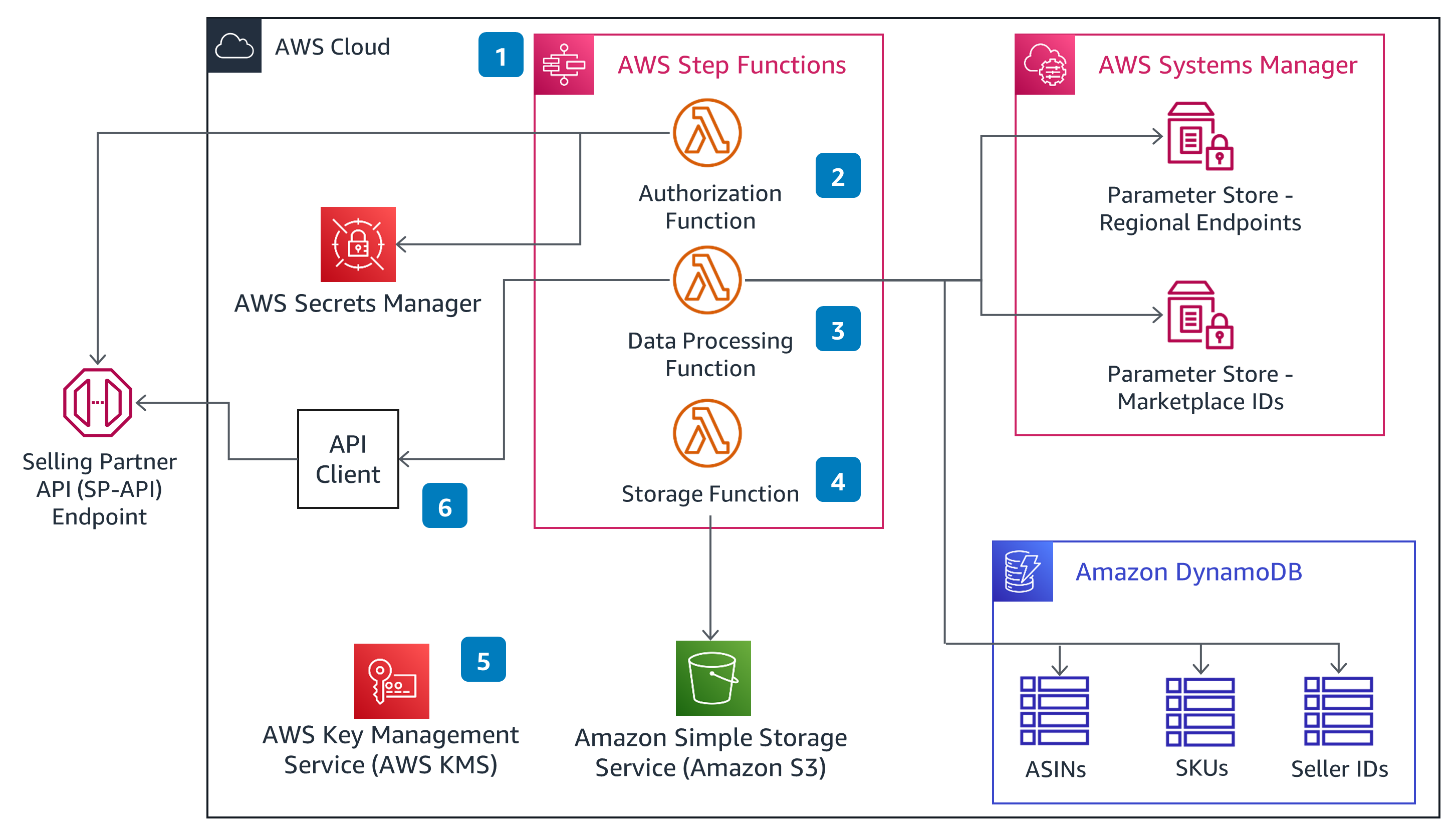
Data Storage, Movement, and Insights
This architecture shows how to build a data analytics pipeline using a Modern Data Analytics approach to derive insights from the data.
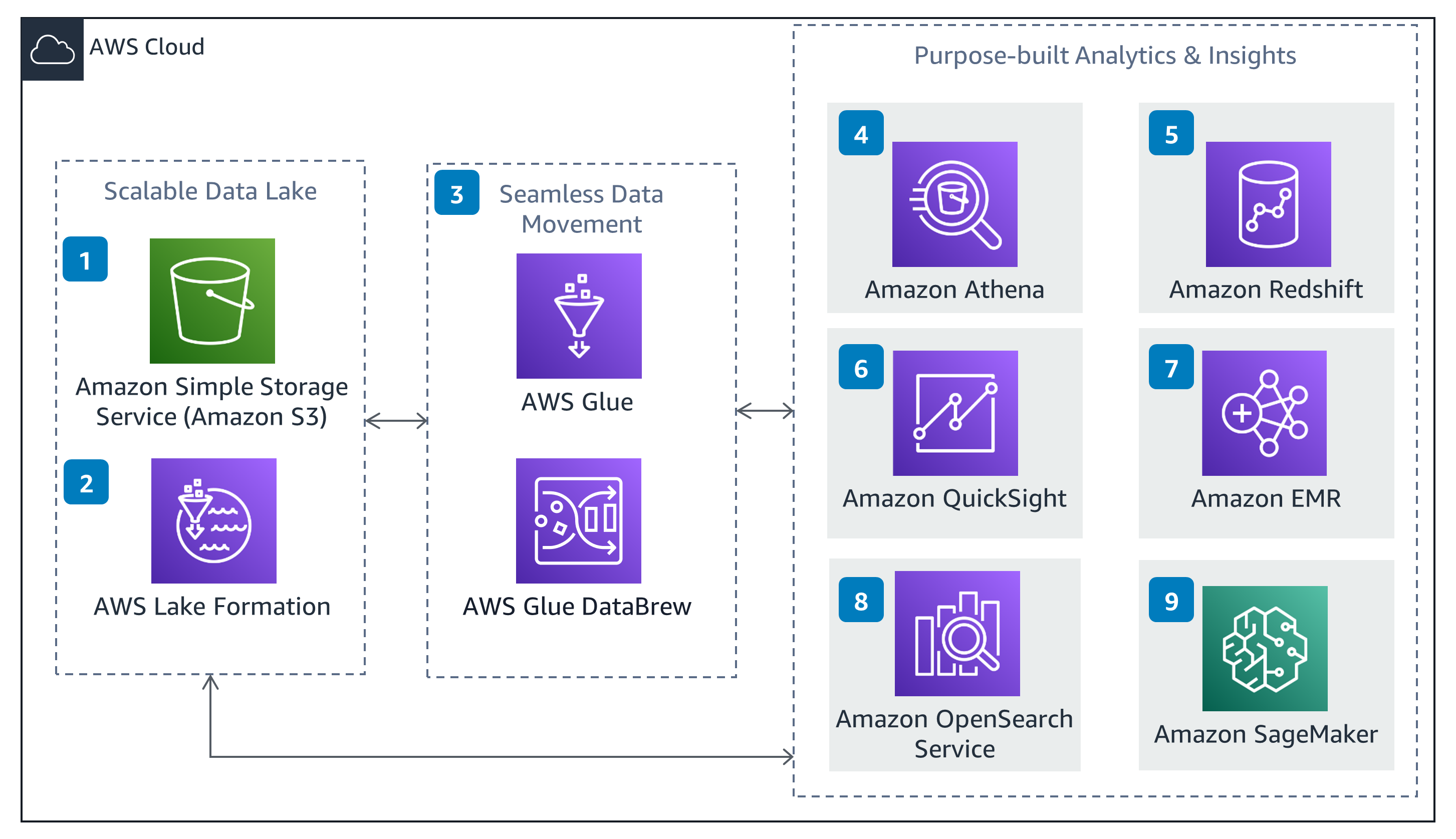
Well-Architected Pillars
The architecture diagram above is an example of a Solution created with Well-Architected best practices in mind. To be fully Well-Architected, you should follow as many Well-Architected best practices as possible.
This Guidance consists of serverless services such as Lambda, Step Functions, and Amazon S3 that are loosely coupled and have built-in version control capabilities for implementing changes.
This Guidance uses a self-authorization model with Amazon Vendor Central. Applications you create are registered in Vendor Central, where you receive a Login with Amazon (LWA) refresh token. These refresh tokens are securely stored in Secrets Manager. LWA refresh tokens are exchanged for LWA access tokens. The LWA access tokens, along with IAM and AWS STS, are used to securely make API calls to Amazon Vendor Central, leveraging well-defined user access permissions.
This Guidance consists of serverless and fully managed services with built-in reliability due to a combination of a service-oriented architecture (like the use of Step Functions to create a serverless application) and microservices (where Step Functions uses AWS STS to execute the call). Selling Partner API requests are limited using the token bucket algorithm, so an API client is recommended for rate limiting.
Scalable and highly available services such as Amazon S3, Lambda, DynamoDB, and Amazon SQS are used as core components to increase performance.
This architecture is designed with a serverless-first approach, leveraging services such as Step Functions, Lambda, DynamoDB, and Amazon S3 for cost efficiency.
Consisting of mostly serverless services, this Guidance reduces the number of resources consumed, contributing to greater sustainability.
Disclaimer
Did you find what you were looking for today?
Let us know so we can improve the quality of the content on our pages